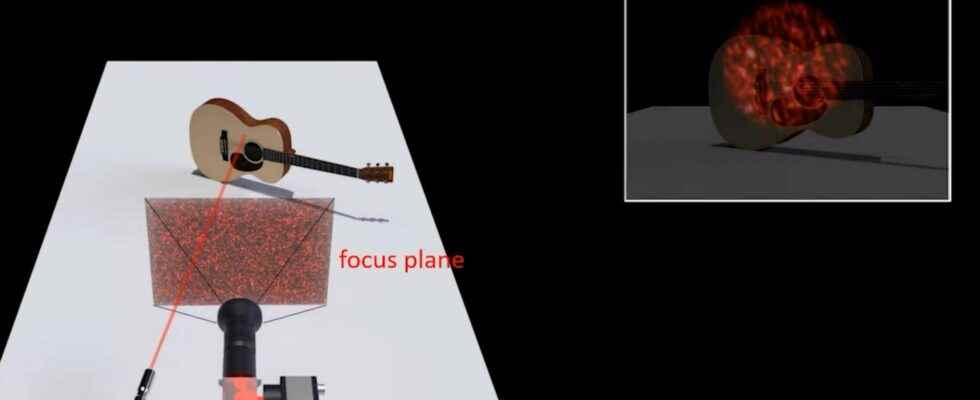Researchers have developed an optical microphone that uses cameras to record the vibrations of objects. This system makes it possible to isolate the sound of a single instrument in an orchestra, and eliminates any effect of the acoustics of the place.
You will also be interested
[EN VIDÉO] The interstellar sound recorded by Voyager-1 In the ionized gas that surrounds it, the Voyager-1 probe recorded two series of waves, which are the signature of the interstellar medium, and not of the solar wind. Transmitted over a loudspeaker, these signals made a sound heard! © NASA, JPL
Isolating the sound of a single instrument in an orchestra, or recording the music being played without ambient noise, is an extremely complicated task, even with the best of microphones. To resolve this problem, researchers from Carnegie-Mellon University in the United States have created a microphone optics capable of seeing vibes of an object and thus capture only the sound produced by a single instrument.
Such a system using only a camera would need to zoom in on an object to be able to pick up tiny vibrations caused by soundand should be at very high speed to detect the frequency of these movements. This type of device would be extremely expensive and complicated to set up.
A laser and two consumer cameras
Instead, the researchers found a solution using much cheaper and more readily available hardware. The optical microphone is based on a laser which is pointed at a surface, such as an instrument. When the laser is reflected, the vibration of the object create scabsor a speckle, in other words a pattern that can be recorded with cameras.
Their system then uses two cameras that record at just 60 frames per second. This may seem insufficient for sounds with a frequency that can reach 20,000 hertz. The trick is to combine images from two different sources.
Explanation and demonstration of the optical microphone. Only in English, activate automatic translation of subtitles. © Mark Sheinin
Two cameras to record at 63 kHz
The first camera has a shutter overall (or global shutter) which records the scene in one take. The second uses a rolling shutter (or rolling-shutter) which saves the image line by line on the sensor with a very slight delay. This delay, which can create distortions in the photo of a moving object, is used here to obtain information about high frequency vibrations. The lines are thus recorded with a frequency of 63,000 hertz.
The researchers then use an algorithm to put the two images together and recreate the sound. Their system works directly on the instrument, like a guitar or a violin, and even on other objects which vibrate by resonance, like a packet of crisps placed in front of a loudspeaker. It is even able to compensate for the movements of the musician.
With this system, sound engineers could track each instrument individually in a band or orchestra, without theinterference others. It entirely removes the effect of acoustics from the recording room by effectively eliminating all echo. The system could even be used to monitor every machine in a noisy factory to spot when one needs maintenance.
Interested in what you just read?
